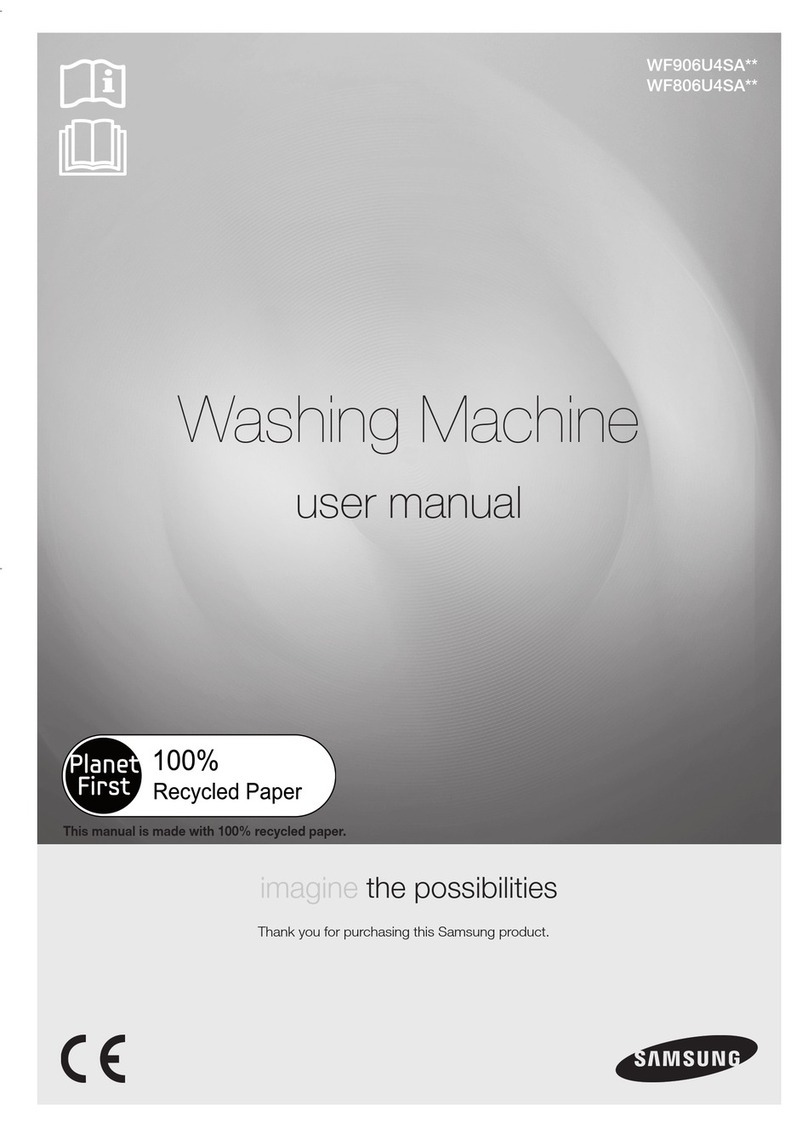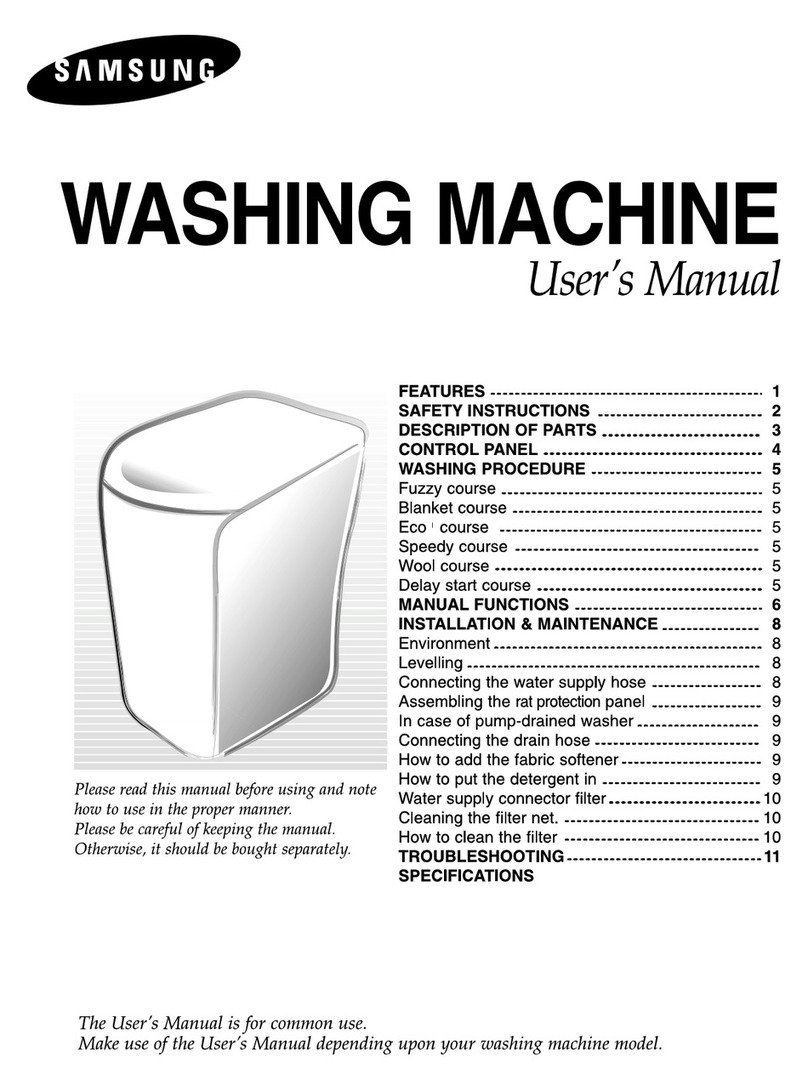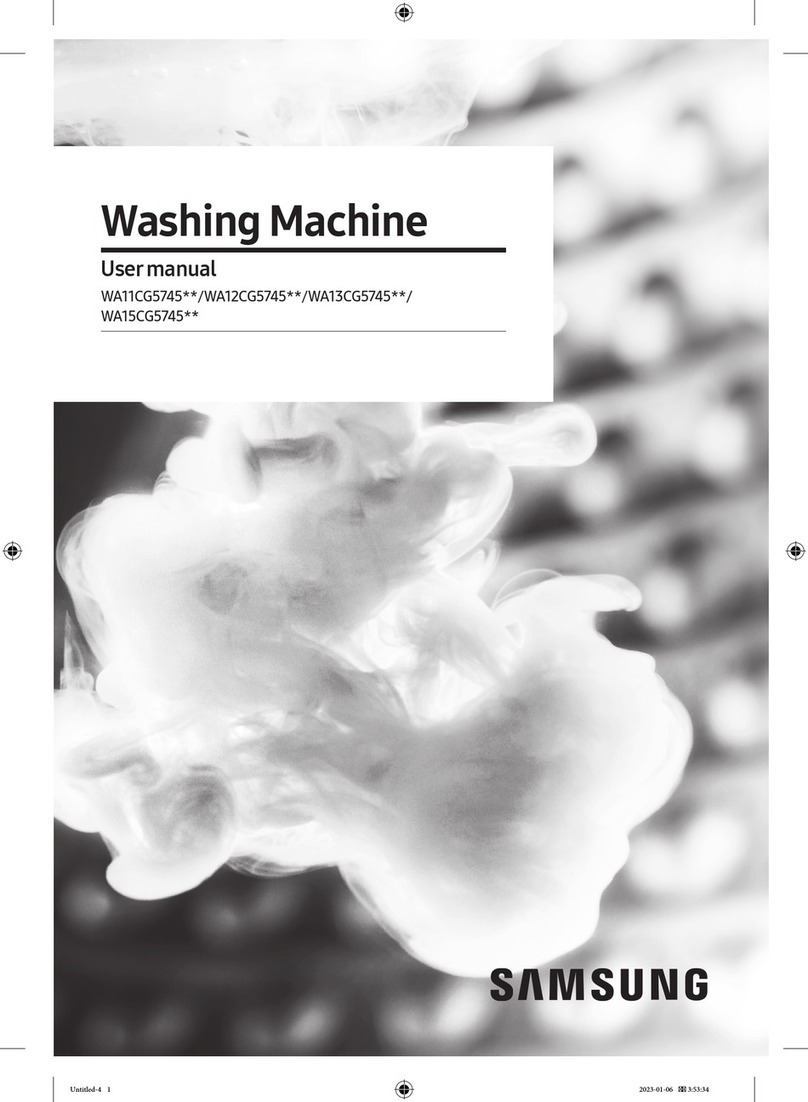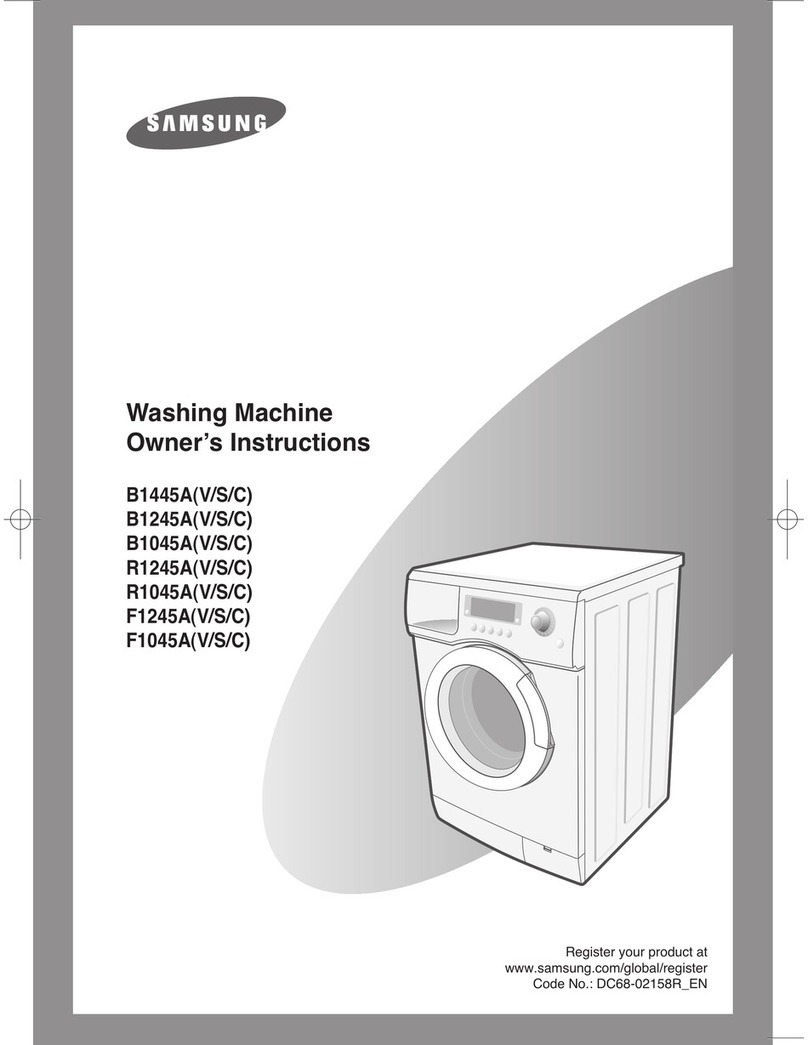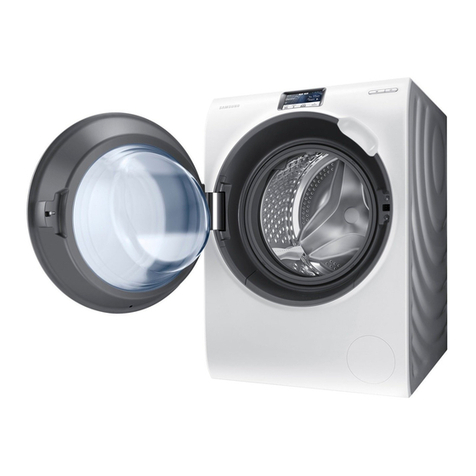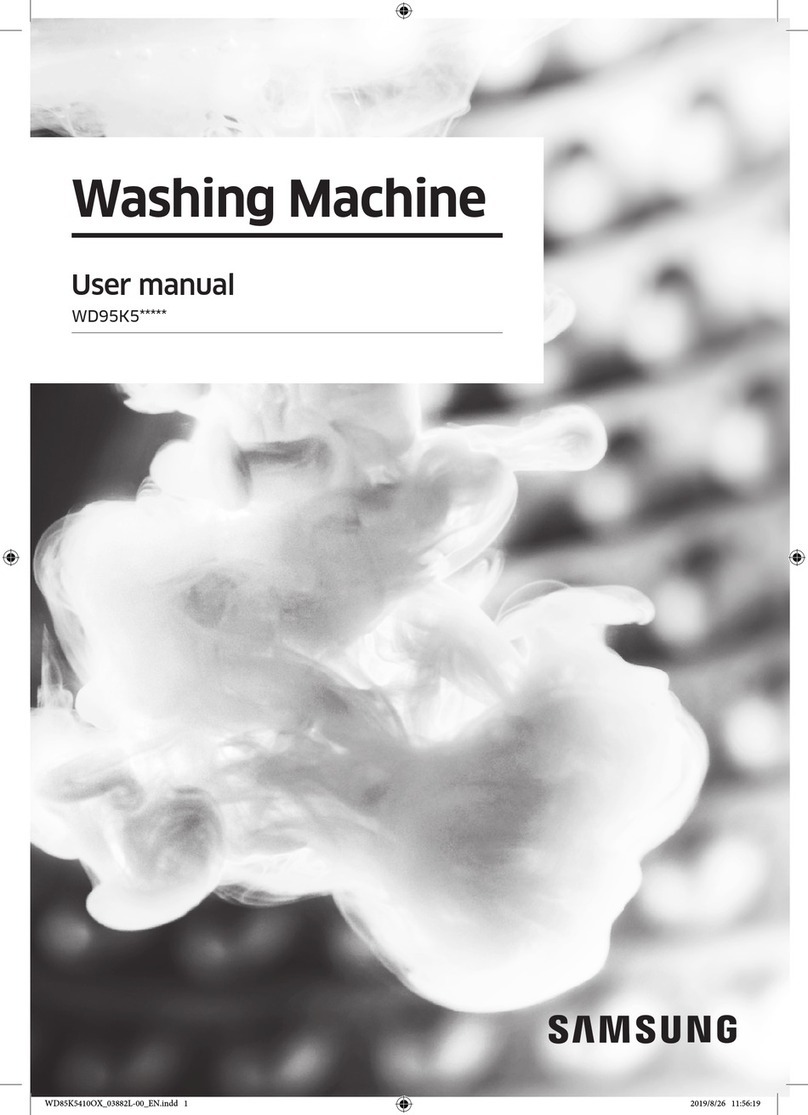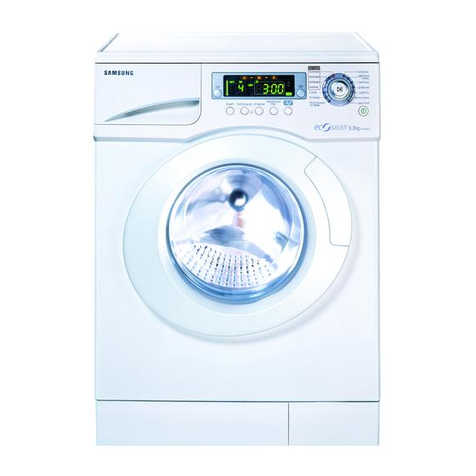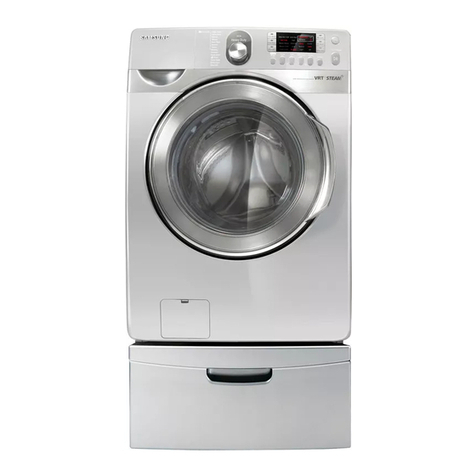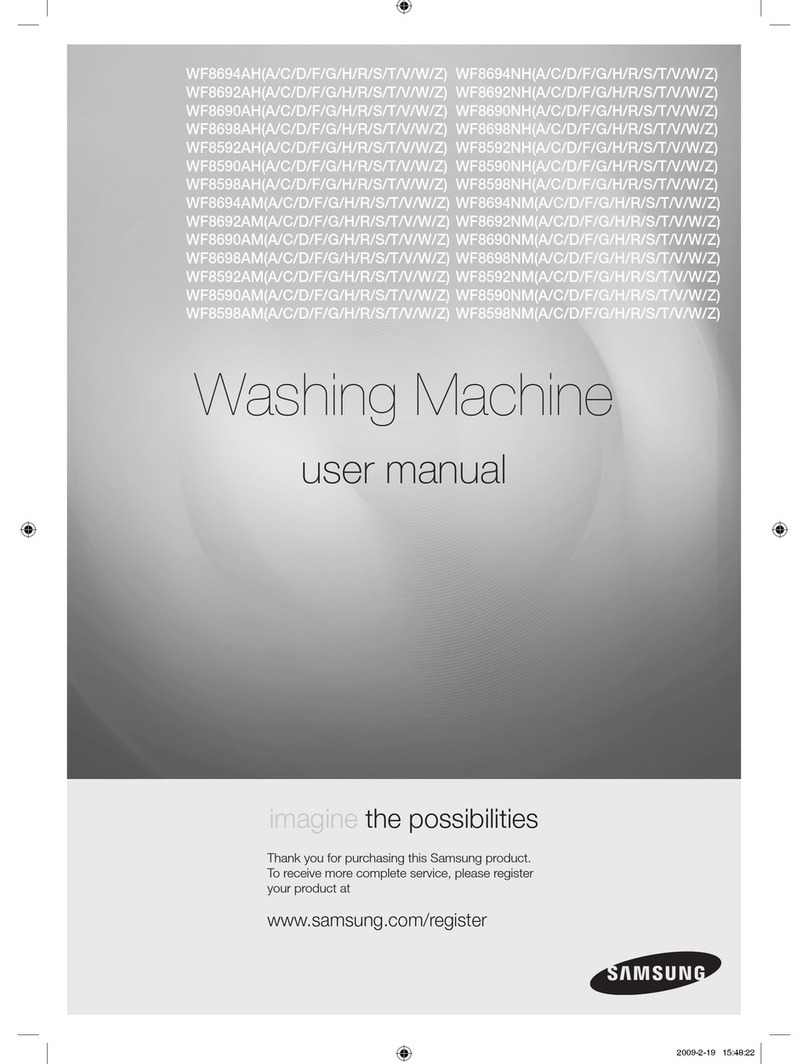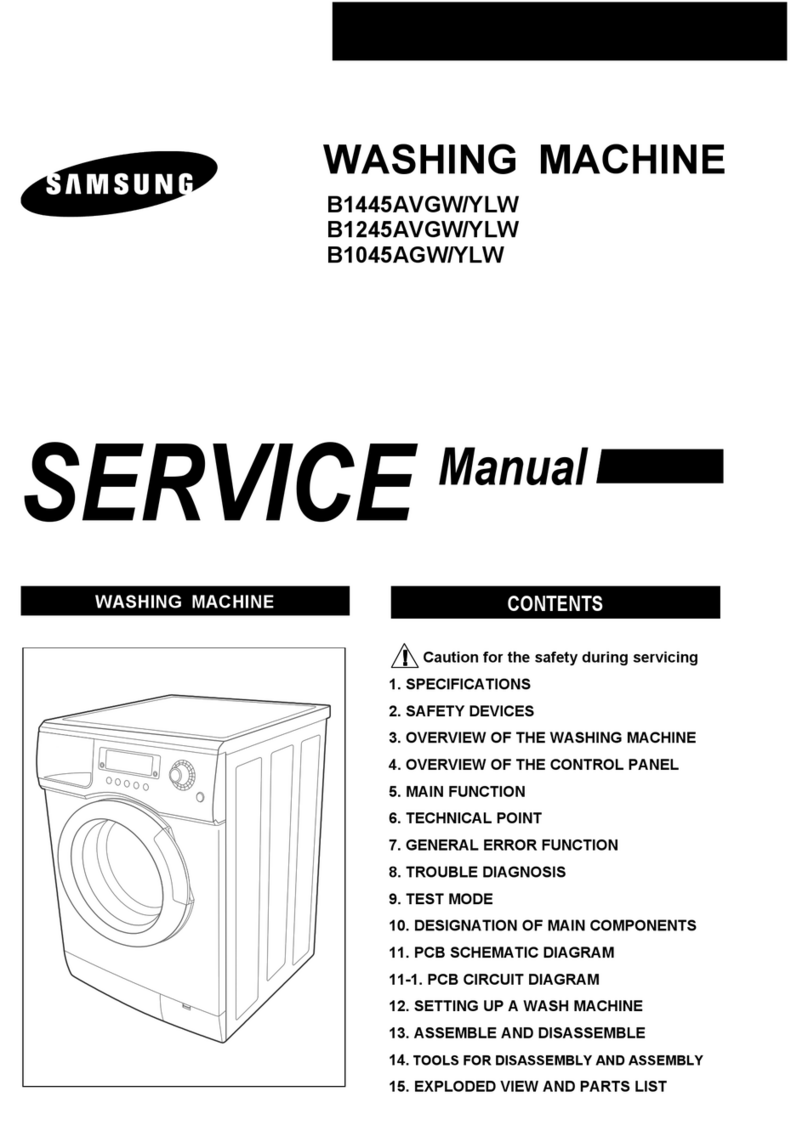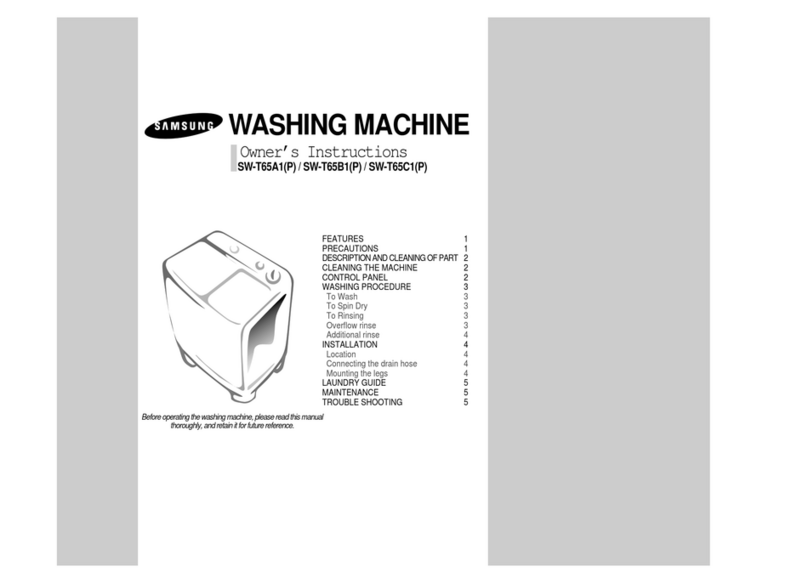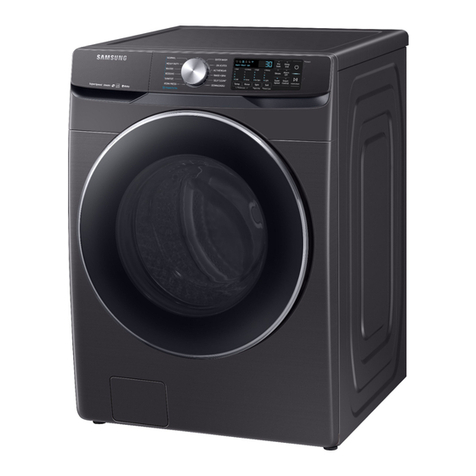
Will Not Start
• Plug the unit into the wall outlet. Check for proper voltage.
• Check fuse or reset circuit breaker.
• Push any key to turn on the washer and press the Start/Pause key to run the washer.
• Close door and push the Start/Pause key to run the washer.
• Check if washer is in a pause, soak or suds process. Wait briefly and it may start. (If the washer is in suds period, Suds will light up instead of
remaining time.)
• Check for restricted drain system. (If there is electrical problem in drain system, “NO Draining” error will occur after 15 minutes.)
• Check Water Supply.
• Check the line or water valve screen filter.
• Check if PCB connectors are assembled LCD / LED properly.
• Check if CN6 terminals on PCB are in good condition. (Refer to PCB Connector Check.)
• Replace PCB.
Leaking
• Make sure inlet hose connections are not leaking. Check for rubber gasket damage due to over tightening.
• Check standpipe for leak. Wrap a dry rag around the standpipe opening. If the rag becomes wet, the leak is the fault of home plumbing.
• Make sure the end of the drain hose is correctly inserted and secured to the drain standpipe.
• Check internal hose connections (fill, drain systems, dispenser hoses & clamps).
• Check the rubber boot. Remove, reposition and reinstall, if necessary.
• Check for a possible kink in the dispenser hose to the outer tub. Hot water pressurization may force the door open
No Tumble
• Start normal cycle with an empty machine and allow a fill to check tumble.
• Perform Quick Spin Test. (Before test, make sure that the tumbler is empty.)
• Check for loose connections at Machine Control Board, Pressure Switch, Motor, Tech Harness and Motor Control.
• Check motor windings resistance. CN8 pins 1 & 3 = 11.6ohms ±7%, Pins 1 & 2 = 11.6ohms ±7%, Pins 2 & 3 = 11.6 ohms ±7%
• Faulty Main Control Board.
• Faulty motor
Will Not Spin
• Make sure to close the door completely.
• Check for water left inside the washer. If so, go to “Will Not Drain”.
• Perform Quick Test Mode or Quick Spin Test. Does the washer spin? (Before the test, empty the unit inside.)If it doesn’t tumble after the above,
change PCB. When the problem persists, change the motor.
• Perform Quick Test Mode or Quick Spin Test. Does the washer spin? If it does, Check Possible unbalanced load scenario in normal mode.
• Check for loose connections at PCB, Water Level Sensor, Motor, Hall Sensor Wire Harness. (CN7,CN5,CN6)
• Check motor windings resistance. CN8 Pin1&3 = 11.6 ohms ±7%, Pin1&2 = 11.6ohms ±7%, Pin2&3 = 11.6 ohms ±7%
No Water Fill
• Perform Quick Test Mode. Check all of the Water Valves visually. (Pre Wash Valve, Cold Water Valve, Bleach Water Valve, Softener dispenser
using Cold & Bleach Water Valve, and Hot Water Valve.)
• Check if water taps are turned on fully.
• Check Water Valves and Water Level Sensor (Refer to PCB Connector Check)
• Check if there is any kink in inlet hoses.
• Check if inlet screens are clogged up.
• Check if water has enough pressure. If so, find out its contributors.
• Check if there is any frozen area in the unit (Drain Hose, etc).
• Measure the resistance of Water Valve Coil. (It should read 1.18K ohms. Check Pin # 1 of CN6 and PIN# 1, 2, 7, 8, 9 of CN1)
• Check Pressure S/W and PCB for loose connections. (Refer to PCB Connector Check).
Will Not Lock
• Door is not aligned or closed properly.
• Perform Quick Test Mode. Check Door Lock. Check the output voltage of Door Lock Coil. If it reads 120V, change Door Lock Switch, and if not,
change PCB. (Refer to PCB Connector Check.)
• Read Lock Switch and PCB (CN6 & CN1). (Refer to PCB Connector Check.)
• Try Door Lock and check for 120V to Door Lock Connector. If 120V present, change Main Control Board and if not, change Door Lock switch.
Will Not Unlock
• Check if the door is being pushed out, which may keep it from unlocking.
• Door locks itself when the water level is too high. Opening door will result in water draining from door opening.
• Check the following with Board Input Test Mode. Water Level (frequency): Over 23.80 KHz. If so, refer to “Will Not Drain”.
Temperature (Inside Drum): Higher than 60ºC/140ºF. If so, wait until it drops. When everything normal, check PCB connectors & Door Lock Switch.
• Drain manually after removing the plastic drain hose holder.
• Display shows “The door will not unlock”. Turn unit off and on. If “The door will not unlock” keeps illuminating, check PCB & Door Lock Switch.
• Read Lock Switch and PCB (RY7 & CN10). (Refer to PCB Connector Check.)
• Perform Quick Test Mode. Check Door Lock. Check the output voltage of Door Lock Coil. reads 120V, change Door Lock Switch, and if not, change
PCB. (Refer to PCB Connector Check.)
